by Dr. Sarah T. Bois, Director of Research & Education for the Linda Loring Nature Foundation
Nantucket habitats are unique. Not only are they 30 miles out to sea, but the contiguous acreages of conservation land are home to a swath of statelisted and otherwise rare species. This includes birds, insects, and, of course, the plants that make up the habitat. The variety in shapes, sizes, and colors of our plant life is such that everyone, even non-plant enthusiasts, can appreciate. One of the most striking thing to people of all interest levels, is the diversity of wildflowers on Nantucket.
As the grasslands in many parts of the US have succumbed to development, invasive species, and/or natural succession, the sheer volume of the grasslands available for enjoyment on Nantucket is stunning. While we call them grasslands, they really are a mosaic of grasses, shrubs, forbs, and an occasional tree. What we call “wildflowers” are generally forbs (annual and perennial). However, the term has been used to include some flowering shrubs as well. Here we highlight some of the showiest that Nantucket has to offer during the early summer. And while you may be tempted to add a few specimens to your centerpiece or window boxes, please remember that these flowers are for all to enjoy. Most of the conservation land on island that we enjoy freely is actually private land. Please don’t pick the wildflowers. Take a photo and if you really must have that bloom, try growing that species yourself.
REDS AND PINKS
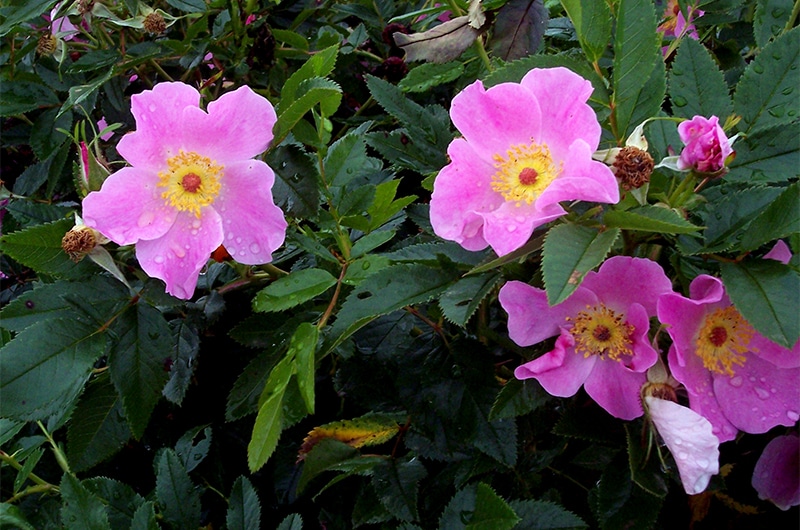
The roses of Siasconset may be a treasure to behold, but it’s the wild roses of the heathlands that inspired these blossoms. The sweet scent of the tiny Virginia rose (Rosa viginiana) attracts many pollinators. It loves the dry, sandy soils found on Nantucket and, thus, is a hearty native, like many Nantucketers!
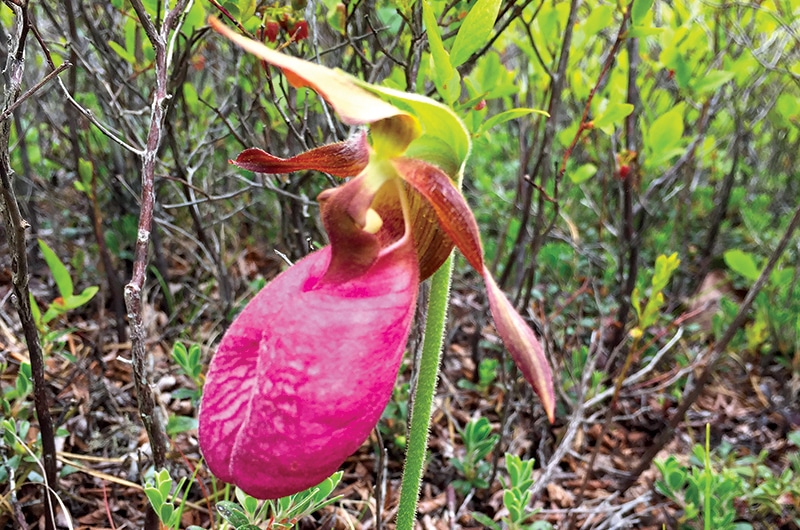
Ladyslippers (Cypripedium acaule) appear in late spring among the low woody growth of the bearberry. When you find a few, you will suddenly notice that a whole patch envelopes you. It’s as if a late night party of ballerinas forgot their slippers all at once.
ORANGES
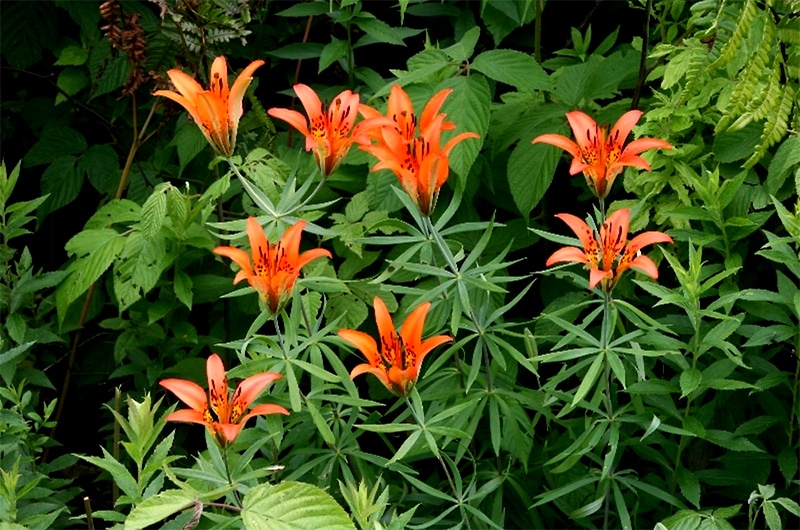
The most notable of the orange blooms is the wood lily. Sometimes appearing more red than orange, the wood lily (Lilium philadelphicum) is found in sandy soils among bayberry at the edge of shrub thickets. It stands often as a solitary bloom one to two feet tall. Unfortunately, the deer love it almost as much as we do. It is pollinated by tiger swallowtail butterflies, so keep your eyes out for an additional “pop” of yellow color.

One of our favorites for attracting pollinators is the native orange milkweed (Asclepias tuberosa). While pink milkweeds get a lot of press for supporting monarch butterfly populations, the orange milkweed is just as useful while also having a unique orange umbel of blossoms. Sometimes called butterfly weed, this plant is a rare find among the sandplain grasslands, but an important nectar source for many pollinators.
YELLOW
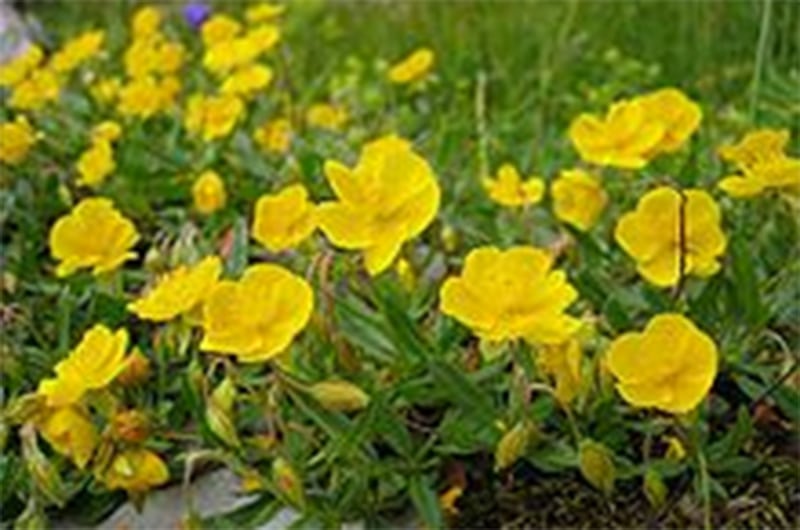
The buttery-yellow petals of bushy rockrose (Crocanthemum dumosum) can be seen among the grasslands starting in late May/early June. Until recently, this species was a state-listed rare plant. This low-growing forb has small, fuzzy, green leaves. Preferring dry, open, sandy soils, Nantucket is the perfect habitat, which is why it is found here in greater numbers than anywhere else in the state.
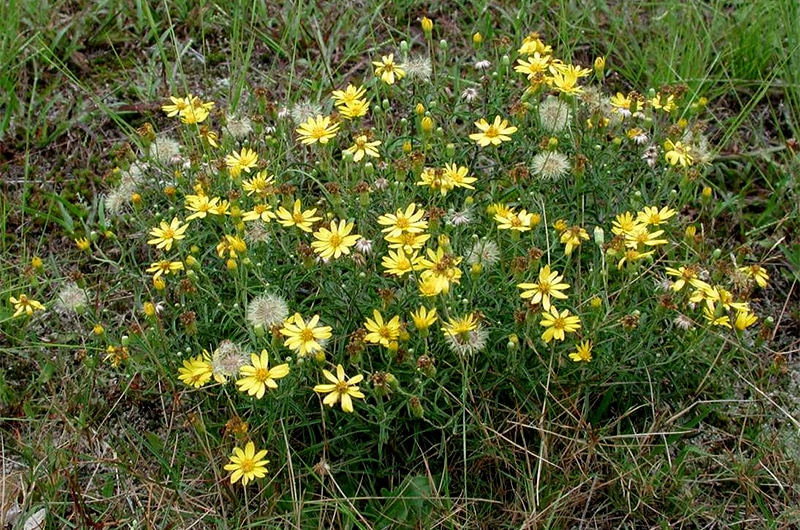
The sickle-leaved golden aster (Pityopsis falcata) is named for the shape of its thin, curved leaves. Only standing about 6 inches tall, the golden yellow of the aster blossom become ubiquitous across Nantucket’s grasslands starting in late June. Disturbance-loving, it can easily be found along trails and road edges growing in crowded clusters.
BLUE/PURPLE
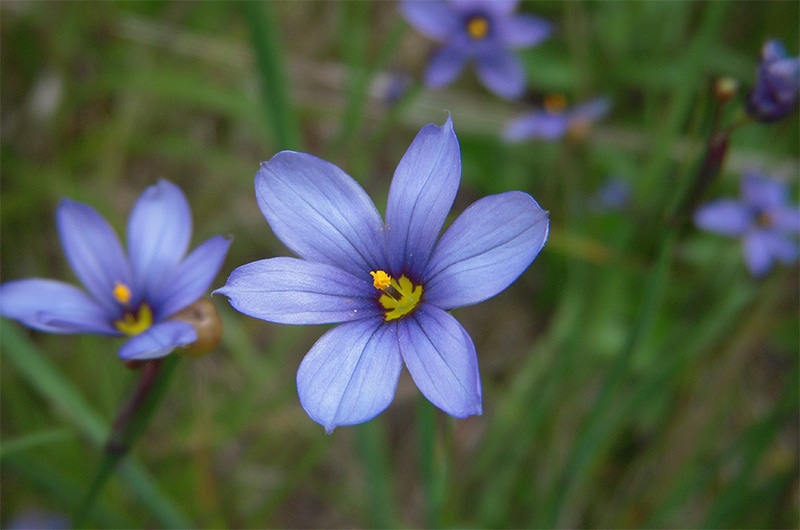
Sandplain blue-eyed grass is not actually a grass at all, but a diminutive member of the iris family. Around late May/early June, these tiny purple flowers with yellow centers pop up around the grasslands and heathlands of the island. This perennial forb may seem abundant on island, but it is a statelisted species of special concern. Found throughout the island’s disturbed landscapes, its populations off-island are dwindling.
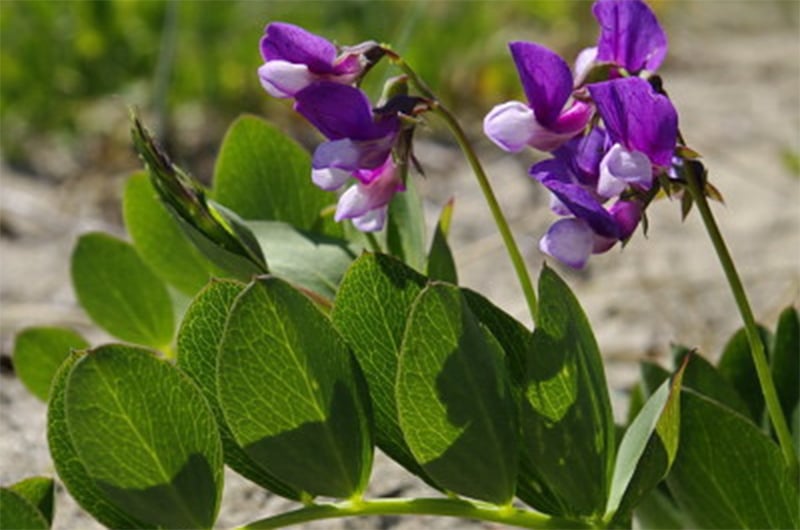
Trekking along a sandy trail to the beach, you will likely find some beach pea in bloom this time of year. The beach pea (Lathyrus japonicas) is a legume and a nitrogen fixer. This allows it to survive in the most nutrient-poor conditions found in the dunes. The flower is typical of the pea family with a dark purple standard petal and paler purple wing and keel petals. They are a pleasure to behold as they are one of the few brightly colored native flowers along the shoreline.
WHITE
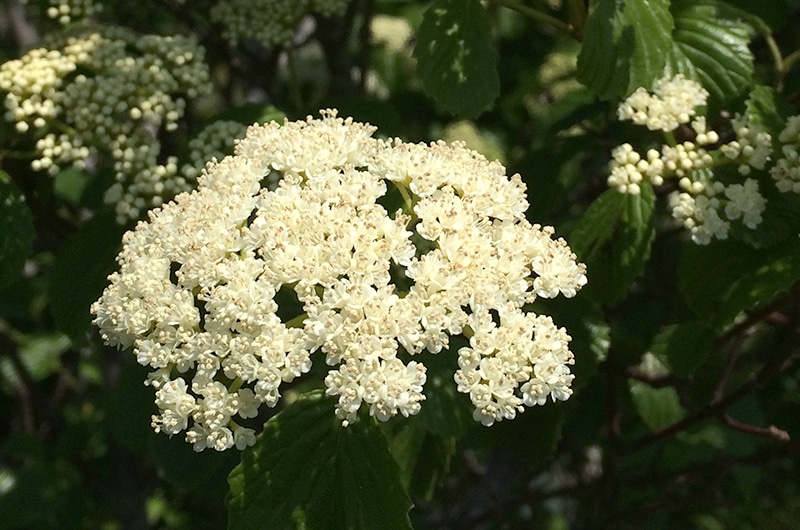
Some of the best white blossoms are found on our native shrubs. Arrowwood (Viburnum dentatum) has some of the most beautiful blossoms come late June. Similar to a lace-top hydrangea or Queen Anne’s lace, the creamy white umbels adorn this favorite shrub. Various arrowwood species are often used in landscaping. This particular species is adapted to the wind and salt spray characteristic of our island and does well among the bayberry and scrub oak.
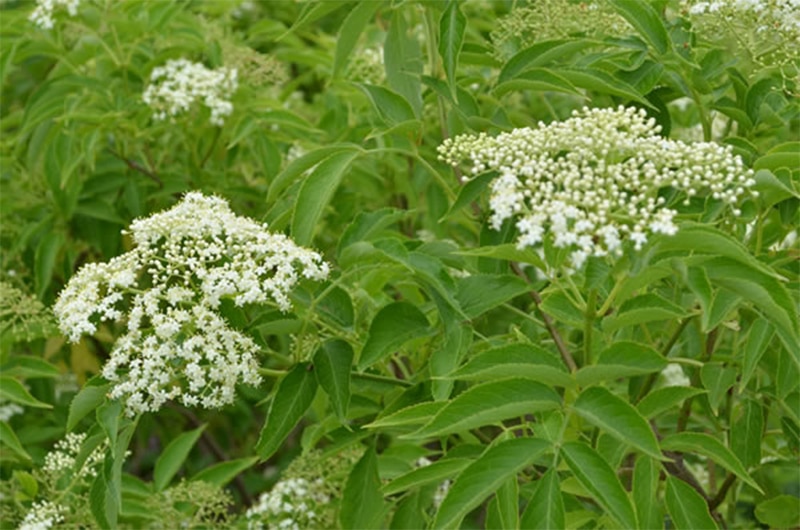
Elderberries (Sambucus canadensis) are often lauded for their delicious, deep purple fruit. However, their blossoms are also a beauty to behold. Similar to arrowood, elderberry flowers are creamy umbels with broad, flat tops up to 10 inches wide. The distinctive flowers can be seen in June even from afar and can indicate where the berries will be at the end of summer. Please remember to take nothing but pictures and leave only footprints. To find some of these wildflowers, strike out on your own along any local trail or see a few of the suggestions below.
Locations to consider for a wildflower walk:
The Linda Loring Nature Foundation – A mosaic of grasslands and shrublands across low, rolling hills on the island’s west end. Located at 110 eel Point Rd. there is ample parking and a roughly 1.5 mile walking trail. I give weekly plant and nature walks Friday mornings at 10am for those interested in a guided walk. http://www.llnf.org/
Smooth Hummocks – Owned by the Nantucket Land Bank, Smooth Hummocks is the area along the south coast near Miacomet Golf club. This low, flat grassland area has some of the best examples of wildflowers. A typical grassland of the outwash plain, this area is regularly managed to maintain the early successional habitat.
Head of the Plains (HOP) – Owned by the Nantucket Conservation Foundation (NCF), HOP is one of the best examples of sandplain grassland. Managed regularly to prevent succession and encourage the grasslands, NCF is starting new management-related research in this area in 2017.


